State Of The American Consumer: September PPM AM/FM Radio Audiences Grow As Office Commutes Hit Post-Pandemic High And School Resumes
Click here to view a 13-minute video of the key findings.
Office worker commutes recently hit new highs, powering AM/FM radio listening increases in Nielsen’s September Portable People Meter reports. Here is the latest on the state of the American consumer and audio.
Google search trends: America puts COVID in the rearview mirror
Tracking Google searches provides an understanding of American concerns and interests. Google reports an index to compare search volumes over time.
The period of highest search volumes receives an index of 100. Search volumes from other time periods are compared to the 100 index. The three-year history of searches for the term “COVID” reveal the peaks and valleys of the pandemic.
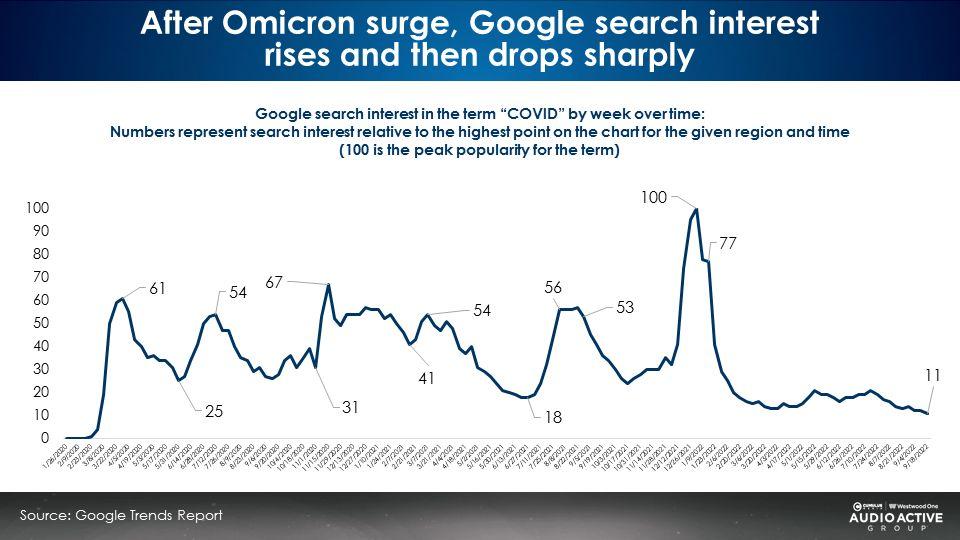
The period of highest COVID search volumes occurred Christmas 2021/New Year’s 2022 during the Omicron variant surge. After that, search volumes plunged. Since March 2022, Google search volumes for COVID have experienced the most sustained period of low search volumes since the pandemic began.
As of late September 2022, Google searches for “COVID” are at an 11 index, 90% off prior highs. While health experts are far from declaring the pandemic over, it appears Americans have moved on.
In Spring 2022, surging gas prices reduced miles traveled
The impact of Russia’s February 24th invasion of Ukraine had an immediate impact on U.S. gas prices. On February 28th, national gas prices rose to $3.61 from $3.28 in January. By March 14th, gas prices spiked to $4.32 and peaked at $5.01 on June 13th.
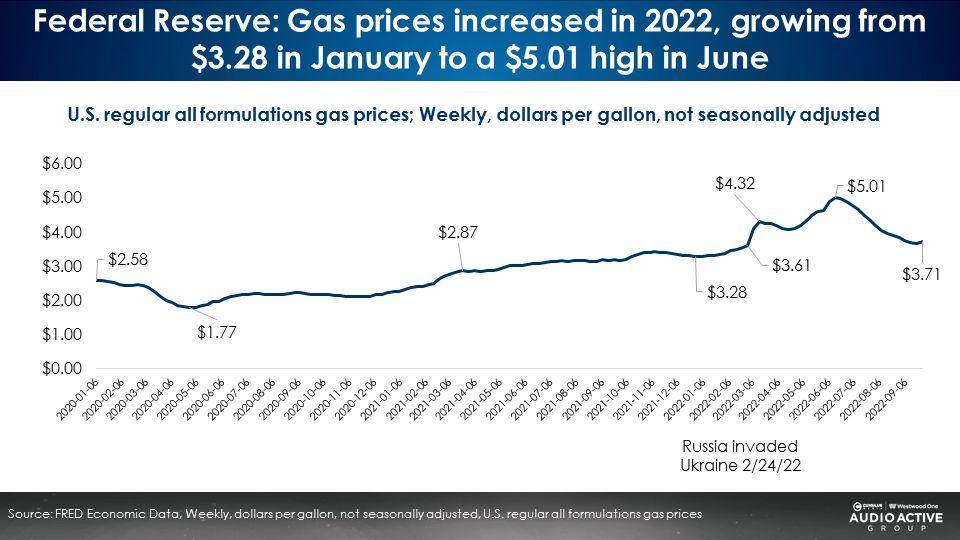
The March spike in gas prices had an immediate impact on U.S. miles traveled. Versus 2019, February 2022 miles traveled reported by MotionWorks were only down -3%. In March 2022, average miles traveled per person sharply dropped -15% versus 2019.
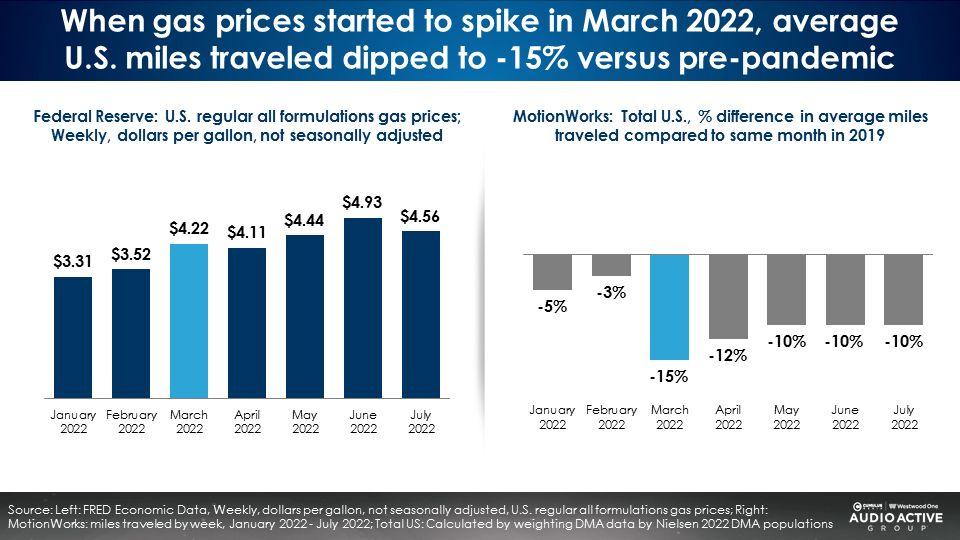
In 2020, the pandemic significantly impacted miles traveled. By 2021, car travel had completely recovered. Despite the moderation of gas prices over Summer 2022, current miles traveled are -10% below 2019 levels. Households could be economizing during these inflationary times.
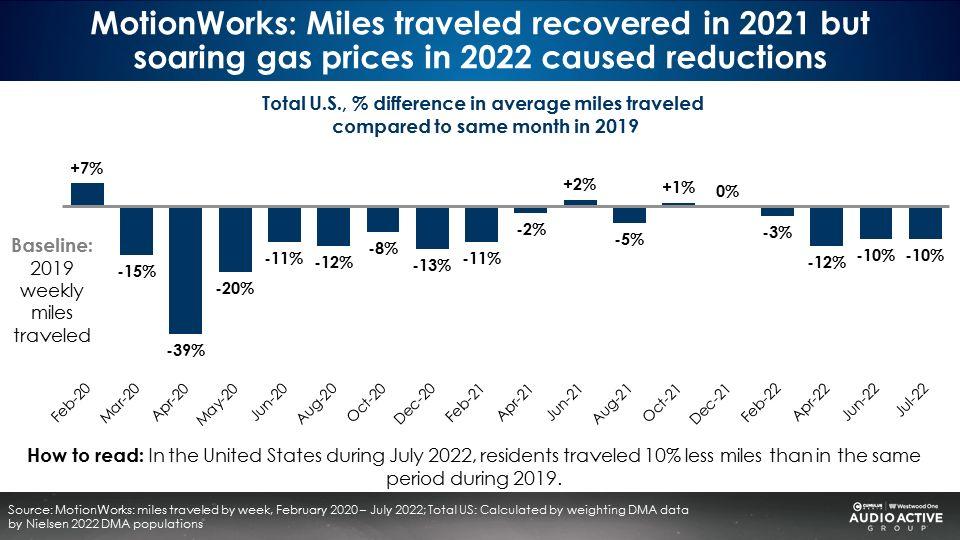
What impact did the sharp decline in miles traveled have on AM/FM radio listening? According to Nielsen, comparing Spring 2022 to Spring 2021 reveals a very slight change. AM/FM radio listening was only down -2% among adults 18+ and -4% among adults 25-54.
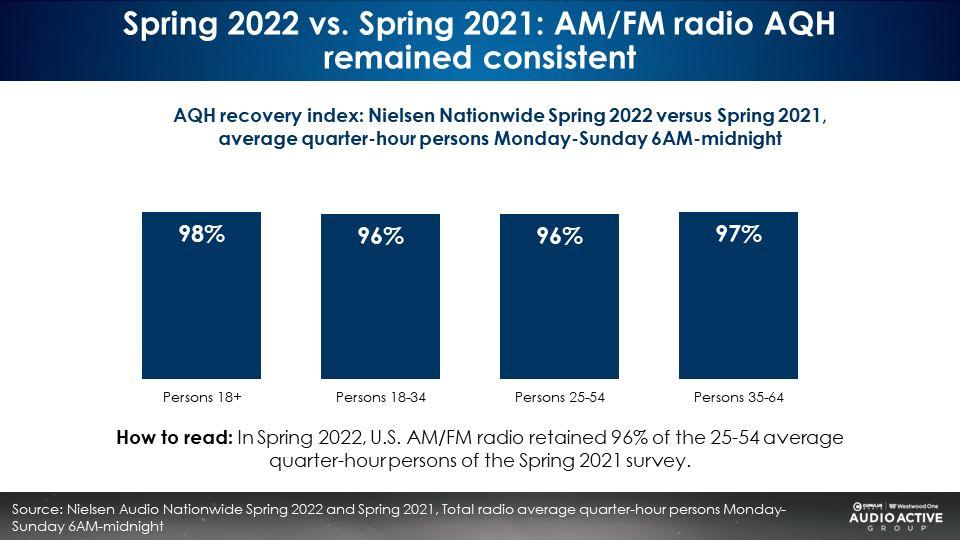
Nielsen: Total U.S. AM/FM radio retains 98% of its pre-COVID audience reach; AM/FM radio’s $75K+ reach is +8% greater than before the pandemic
Recently, Nielsen released the Spring 2022 Nationwide report. Nationwide is Nielsen’s roll up of all AM/FM radio listening from all U.S. markets and counties produced twice a year in Spring and Fall. The Spring Nationwide survey is used as the basis for AM/FM radio network upfront negotiations for the coming year as well as Q4 scatter buys.
In Spring 2022, U.S. AM/FM radio retained 98% of its total reach as compared Spring 2019, a year before the pandemic.
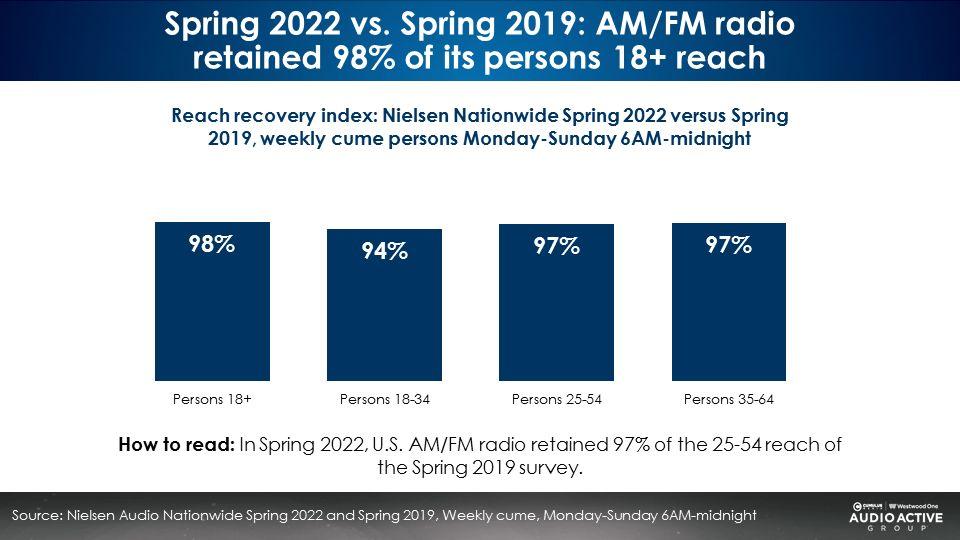
AM/FM radio audiences are up in upscale households with an income over $75,000, representing about 53% of U.S. households. Total reach of American AM/FM radio is up +8% since 2019 among adults 25-54 and 35-64 with a $75,000+ household income.
Nielsen reports an increase in the number of Americans in homes with a $75K+ income. Since most people listen to AM/FM radio, it’s natural that AM/FM radio’s reach is up among those with a $75K+ household income.
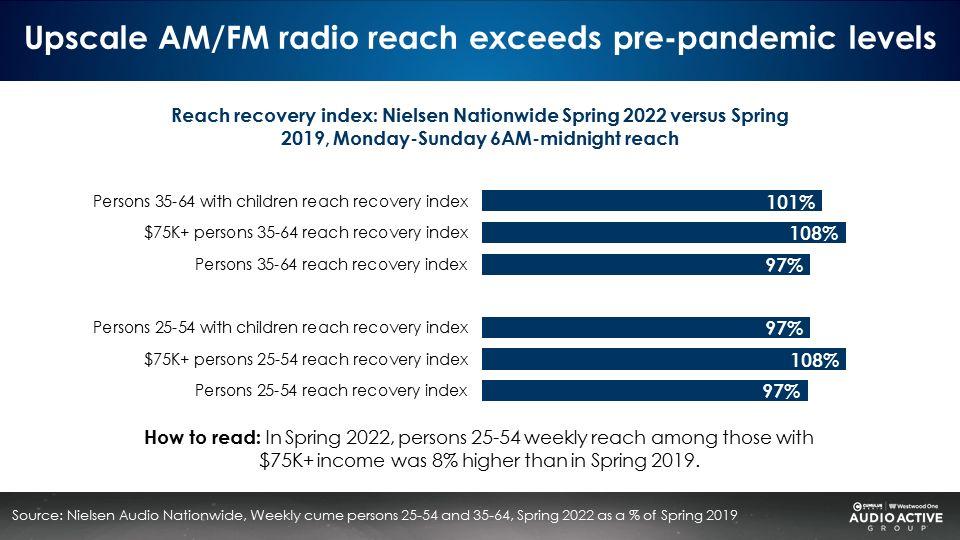
Kastle: September office building occupancy was up +10% since August
Post-Labor Day, Kastle reports that U.S. office occupancies have hit record post-pandemic highs. Office populations during the week of September 21st grew +10% versus August.
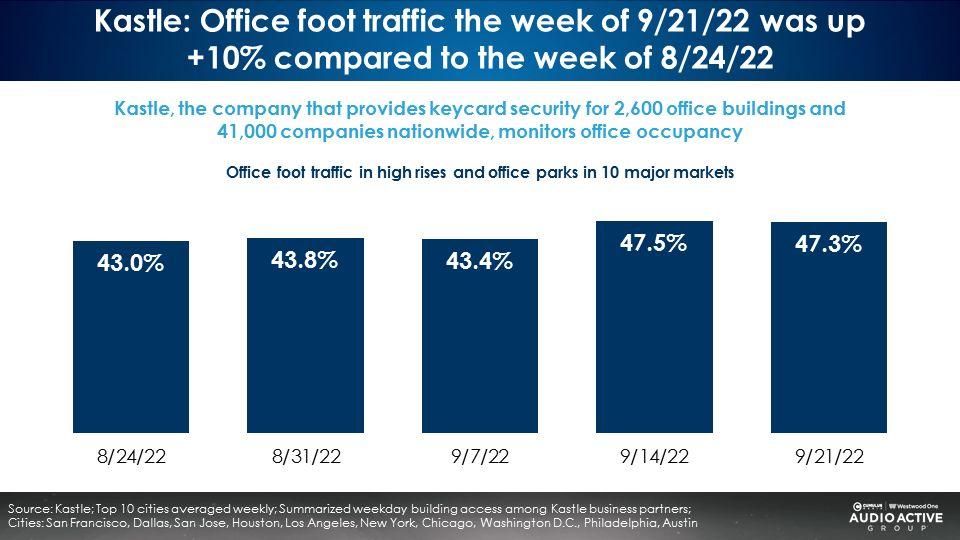
Comparing office attendance volumes since the outbreak of the pandemic, Fall 2022 is off to a very strong start. As of the week of September 21st, office occupancies are 47.3% of pre-COVID volumes. While still half of the prior, the back-to-work trend is clear. Kastle reports the days with the largest occupancy are Tuesday, Wednesday, and Thursday.
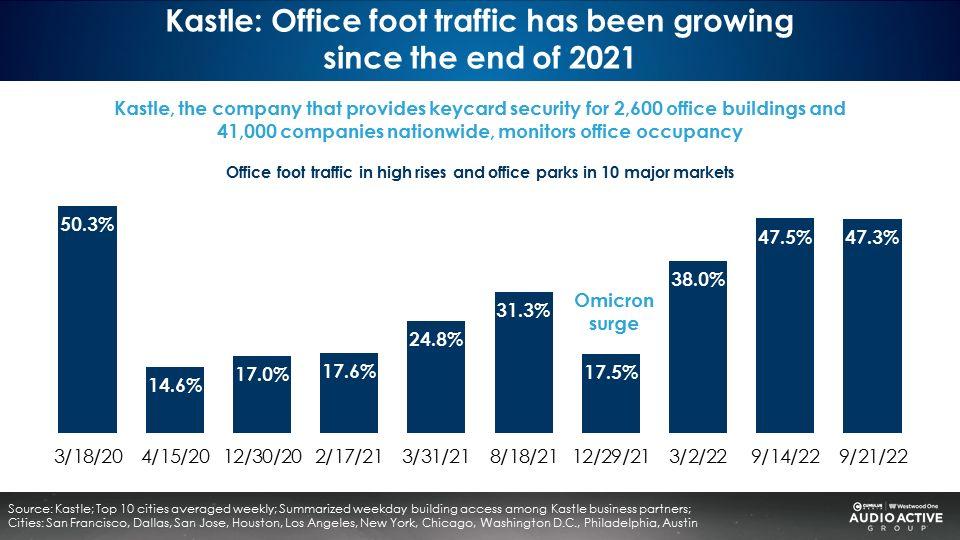
Texas markets lead the country in Kastle’s back-to-work office occupancy report
There is a twenty-point difference between office occupancy in Austin (60.5%) versus San Francisco (39.2%). Of the ten markets in Kastle’s “Back To Work Barometer,” Texas markets lead in office attendance.
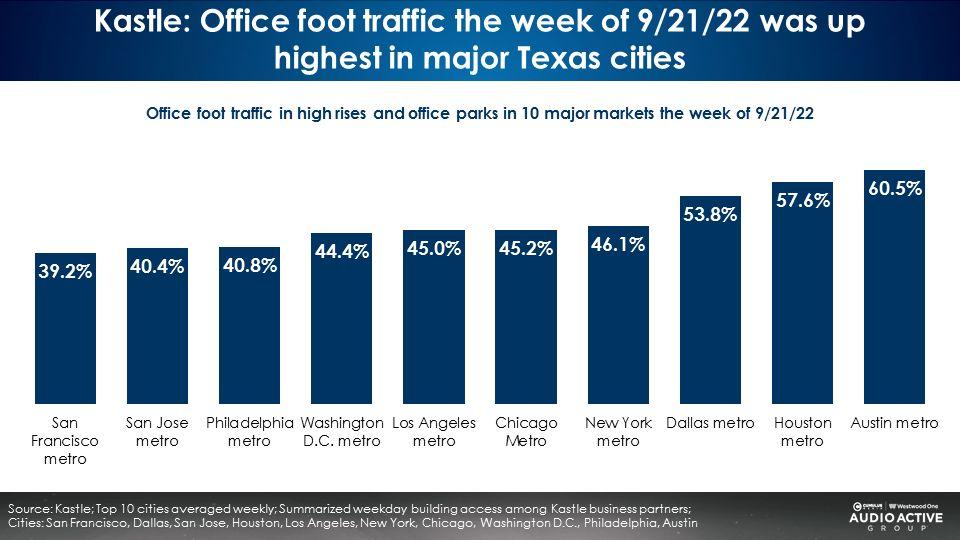
Nielsen September Portable People Meter: Morning drive listening is up +10% since July reflecting back-to-school and back-to-work trends; Reach is 97% of pre-COVID levels
Since the pandemic began, Nielsen has been comparing listening in all Portable People Markets to March 2020.
Over the last two months, morning drive audiences are up sharply. This is a similar pattern seen in prior years as school resumes and workers return to workplaces.
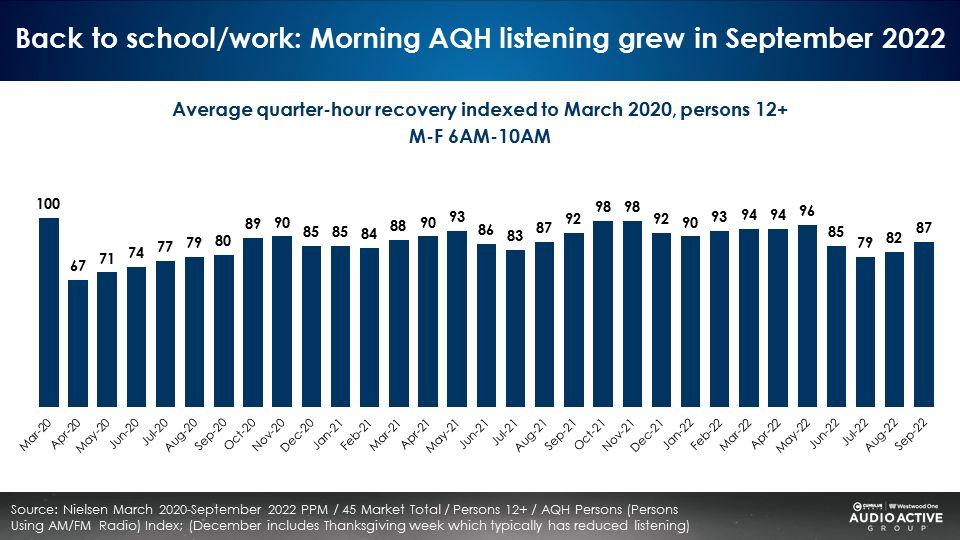
In September 2022, overall, the combined reach of AM/FM radio in the PPM markets has held steady at 97% of March 2020 levels.
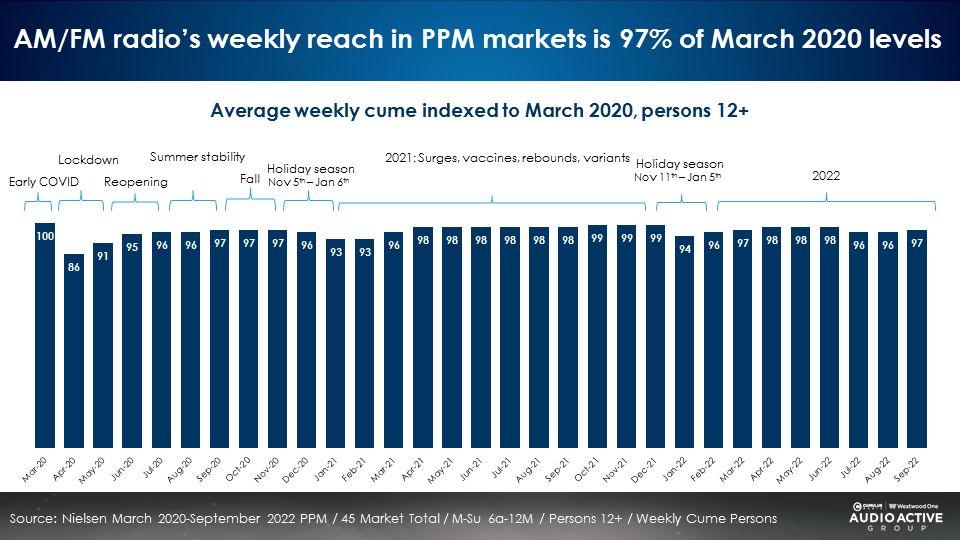
Nielsen Continuous Diary Markets: Reach and AQH have been exceptionally stable over the last three years
The pandemic impacted top 50 markets to a far greater extent. While listening in PPM markets dipped in 2020 and then recovered, listening in diary markets over the last three years saw virtually no change. Over the last three years, AM/FM radio’s AQH and reach have been steady as a rock in diary markets.
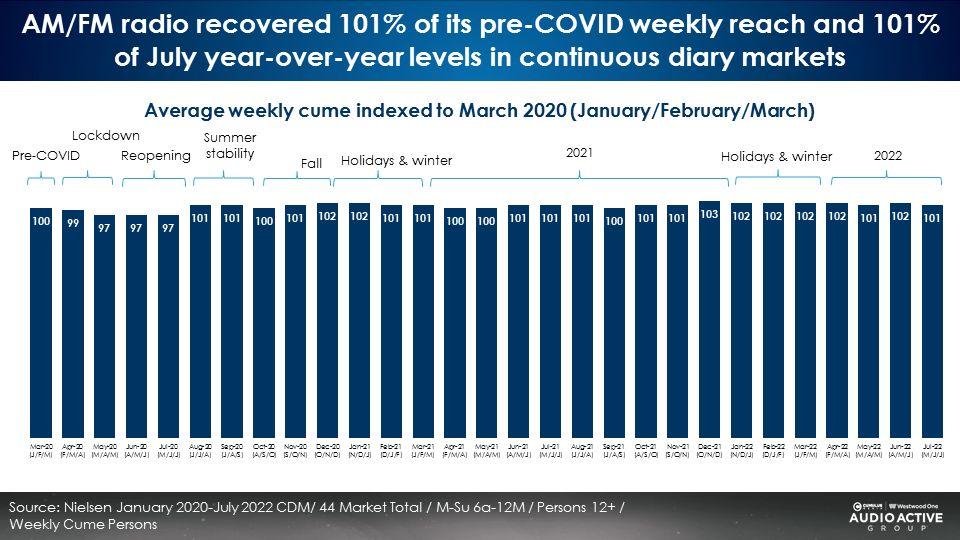
Key takeaways:
- Google search trends: America puts COVID in the rearview mirror
- In Spring 2022, surging gas prices reduced miles traveled
- Nielsen: Total U.S. AM/FM radio retains 98% of its pre-COVID audience reach; AM/FM radio’s $75K+ reach is +8% greater than before the pandemic
- Kastle: September office building occupancy was up +10% since August
- Texas markets lead the country in Kastle’s back-to-work office occupancy report
- Nielsen September Portable People Meter: Morning drive listening is up +10% since July reflecting back-to-school and back-to-work trends; Reach is 97% of pre-COVID levels
- Nielsen Continuous Diary Markets: Reach and AQH have been exceptionally stable over the last three years
Click here to view a 13-minute video of the key findings.
Pierre Bouvard is the Chief Insights Officer of the Cumulus Media | Westwood One Audio Active Group®.
Contact the Insights team at CorpMarketing@westwoodone.com.